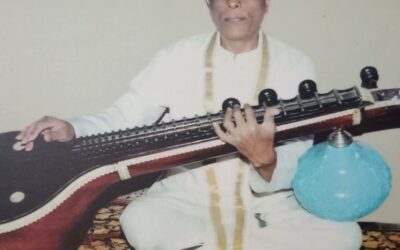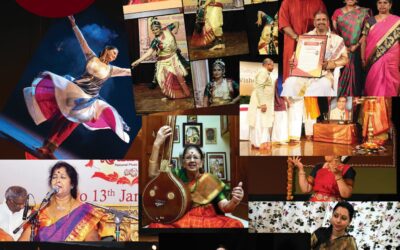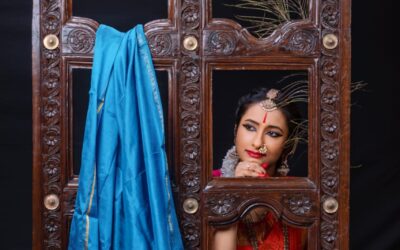Kantara – The Politics of Divinity – An Artistic observation
– Ramaa Venugopalan
Kantara made headlines for many reasons. In the present scenario, where everything seems to be viewed through a politico-religious lens, i wondered if the movie had more to offer. As a practitioner of art and having studied the history of arts, Indian philosophy and being aware of the essence of ritualistic art forms, I wondered how it will translate on the big screen.
Kantara, in essence, is about the Bhoota Kola art form. It’s deeply rooted in an ethos beyond the rationalisation of the human mind. One certainly can bind it with intelligent jargons and phrases, but essence of the art form is beyond that rationalisation. When these art forms are brought to the fore and projected through cinematic lens, the art form is often morphed into something else. There are many movies that have tried this and failed miserably. Bhoota Kola is not a mere art form. It’s the truth and a matter of faith to a section of community and an art from that is passed on through generations. To inhabit that truth, even for a brief cinematic experience requires faith and a personal experience too. The tone of the movie set it for me right from the opening song Varaha Roopam, which is already a musical chart burster and much to my annoyance, has a zillion lousy overlaps on social media.
The first thought is really about the cultural ethos of this art form. The language, the community, their habitat and most importantly their kshetra – their association with the space is an important aspect. The opening scene set in the 1970s are moments that are key to establishing the Sthayi bhava or the underlying emotional crux of the movie. Rishab Shetty as Shiva, owns every scene with conviction and ease. His belief and faith, having grown up and being moved by this experience many times over, comes through unapologetically as he lives this art form during the course of the movie. The crux of this movie is simple, for me. It’s about the practice and faith one invests in the art form, the constant seeking of the divinity in the art form. The phrase “artists are divine” is often hurled with abandon. And so is the phrase “art is political”. Politics is a layer that is thrust upon our arts. Art is not political, artists are political. Art is divine, but this divinity chooses to bestow and inhabit artists. It’s not a norm, it always is an exception. One must be immensely blessed to be the chosen one.
Artists can become a conduit for divinity, only if they empty themselves completely, and beyond the rationalisation of their mind and ego, and surrender to the possibilities of what the art can bestow in them. This is an exception and not a norm. It’s beyond skill, craft and practice. To believe that every artist is divine just because they practice the art form is not a standard postulate, but unfortunately is a standard assumption. Especially when it comes to any ritualistic art form that has an interplay with a deity, is deeply embedded in the psyche of the kshtera, and community across generations adhering to the core value and the rituals with unflinching faith. It is vastly different from normal artists donning a role or trying to portray this form. While the movie does cater to the religious, socio-politics and powerplay, in essence it’s a showcase of Bhoota Kola and its essence and truth. The climax of the movie, although a tad dramatic – is proof enough that Rishab Shetty must have experienced that truth for a fraction of a second. His transformation as the demigod GuLiga is beyond just a dramatic cry for the camera. It’s a moment of truth for him and for his belief in this ritual. Had he not experienced that for himself at some point in time in his life, that one scene could have sealed the entire movie’s fate as a fake retelling.
Here in lies the truth of the divinity of the art form. Art chooses the artist to bestow with its divinity. Artists do not choose anything. There is a profound dialogue that reaffirms this truth. In the beginning scene, the greedy landlord chides the GuLiga and asks him an accusatory question ” Is it the Deiva that is talking or is it the artist in the vésha of the Deiva that is giving the verdict?”. The same is reiterated when the landlord’s son, later, kills the character Guruva, who is chosen to wear the Kola – when he refuses to give the verdict at the behest of the landlord, citing that it is the Deiva which speaks and not him, and one does not know what it can be. Ritual artistic explorations on cinema is often a compromised one. To me, personally, Kantara has stayed with the truth without this compromise.
Art chooses. The artist must be ready. It never is the other way.
And it sure chose Rishab Shetty through Kantara to make it happen. His refusal to shout or recreate the GuLiga expression for press conferences, requesting people not to hurt the sentiments of that community, and also to condemn the memes of that sound for thrills is case in point. We need more artists like him who are in touch with the truth and don’t short sell it for cheap thrills. And this is only possible because, i believe, he has experienced something more that what meets the eye. Beyond the realms of politics, art has its core essence. It is beyond the mind, the people, the logic and the rationalisation. Its a silent ebb that defines the many untouched fabric of our society and of our Dharma itself.
The essence of our art is truth itself. For those who wish to inhabit that truth, art will bestow. All else, will always be a mere performance.
**********



